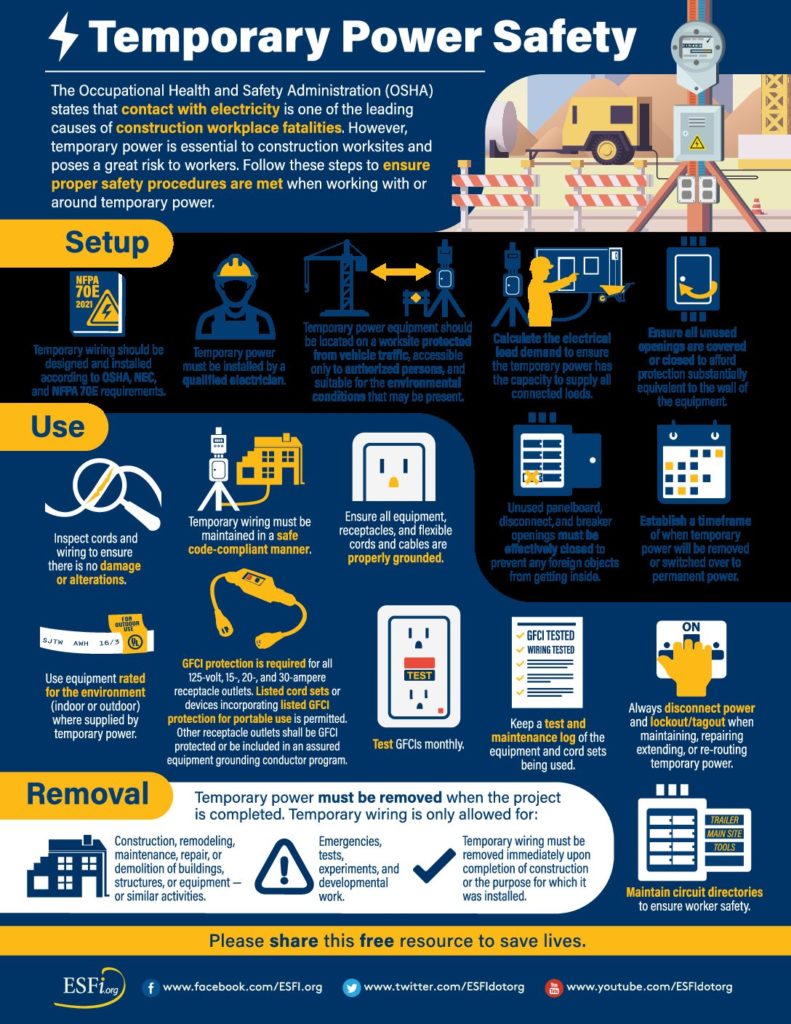The Occupational Health and Safety Administration (OSHA) states that contact with electricity is one of the leading causes of construction workplace fatalities. However, temporary power is essential to construction worksites and poses a great risk to workers. Follow these steps to ensure proper safety procedures are met when working with or around temporary power.
Setup
- Temporary wiring should be designed and installed according to OSHA, NEC, and NFPA 70E requirements
- Temporary power must be installed by a qualified electrician
- Temporary power equipment should be located on a worksite protected from vehicle traffic, accessible only to authorized persons, and suitable for the environmental conditions that may be present
- Calculate the electrical load demand to ensure the temporary power has the capacity to supply all connected loads
- Ensure all unused openings are covered and closed to afford protection substantially equivalent to the wall of the equipment
- Unused panelboard disconnect and breaker openings must be effectively closed to prevent any foreign objects from getting inside
- Establish a timeframe of when temporary power will be removed or switched over to permanent power
Use
- Inspect cords and wiring to ensure there is no damage or alterations
- Temporary wiring must be maintained in a safe code-compliant manner
- Ensure all equipment, receptacles, and flexible cords and cables are properly grounded
- Use equipment rated for the environment (indoor or outdoor) where supplied by temporary power
- GFCI protection is required for all 125-volt, 15-, 20-, and 30-ampere receptacle outlets. Listed cord sets or devices incorporating listed GFCI protection for portable use are permitted. Other receptacle outlets shall be GFCI protected or be included in an assured equipment grounding conductor program
- Test GFCIs monthly
- Keep a test and maintenance log of the equipment and cord sets being used
- Always disconnect power and lockout/tagout when maintaining, repairing, extending, or re-routing temporary power
- Maintain circuit directories to ensure worker safety
Removal
Temporary power must be removed when the project is completed. Temporary wiring is only allowed for:
- Construction, remodeling, maintenance, repair, or demolition of buildings, structures, or equipment, or similar activities
- Emergencies, tests, experiments, and developmental work
- Temporary wiring must be removed immediately upon completion of construction or the purpose for which it was installed

